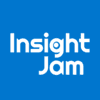Software Buyers Beware: SaaS is About to Get Weird


SEON’s President, GTM Matt DeLauro offers commentary on how software buyers should beware; the world of SaaS is about to get weird. This article originally appeared in Insight Jam, an enterprise IT community that enables human conversation on AI.
Software-as-a-Service (SaaS) is poised for a significant shift driven by market consolidation and heightened buyer vigilance. The post-pandemic surge in digital transformation, fueled in large part by venture capital, is giving way to an era of financial prudence and strategic realignment. This shift is driven by companies intensifying their focus on the efficiency and effectiveness of their tech stacks, a trend highlighted by notable contractions in the average SaaS portfolio. Companies are scrutinizing their tech investments more carefully than ever before.
These changes signify a move away from isolated and disparate point solutions toward integrated platforms that offer interconnected functionalities. This evolution is reflected in the elongation of B2B SaaS sales cycles, which have expanded from 33 days in 2020 to 43 days in 2024 (and 65 for enterprise-grade business), indicative of the more meticulous purchasing process. On the funding front, Crunchbase reports that we’re currently 10 quarters into a startup funding decline, heralding a cooling market that necessitates a more discerning investment approach.
As we depart from the frenetic pace of the past decade that favored rapid expansion over solid financial footings, the SaaS sector, once a playground for endless innovation and venture optimism, is set to enter a new phase. Buyers are adopting a more circumspect approach, aligning their strategies with the evolving dynamics of a more mature marketplace. As the industry braces for a potentially rocky transition, software buyers be advised: things are about to get weird, and navigating this new terrain will require a keen eye and a strong penchant for detailed due diligence.
The New Reality of Vendor Assessment
The SaaS landscape in 2025 is positioned for more mergers and acquisitions. See Visa’s purchase of Featurespace and Experian’s integration of NeuroID[1] as acceleration proof points in the fraud prevention space. This consolidation will further reshape the market and redefine the types of SaaS products that thrive under stringent market conditions. With an increasing focus on risk mitigation, security and compliance, applications are becoming critical components of the tech stack.
For software buyers, this consolidation necessitates a more sophisticated approach to vendor evaluation. Organizations must rigorously vet existing and potential vendors based on factors such as their current position and long-term viability. Standard due diligence must include questions about year-over-year growth, new client acquisition rates and overall financial health. Such scrutiny distinguishes vendors operating on stable revenue models from those primarily subsisting on investor funding.
The Right to Ask Hard Questions: Strategic Imperatives for Software Buyers
To navigate complexities, companies should consider implementing these strategic measures:
- First, establish a systematic approach to software stack auditing. Regular evaluations help identify potential vulnerabilities in your technology infrastructure and assess the impact of market changes on your operations. Pay attention to mission-critical applications.
- Second, prioritize integration capabilities when evaluating new solutions. The trend toward consolidated platforms means that standalone solutions must demonstrate clear value and seamless integration potential with your existing technology stack. This approach helps minimize operational risks and protect against service disruptions.
- Third, develop robust contingency plans for potential vendor transitions. As market consolidation accelerates, having clear procedures for vendor changes or service discontinuations becomes crucial for maintaining business continuity.
Such plans ensure that businesses can maintain continuity, minimizing the impact on operations and preserving customer trust.
SaaS Grows Up
The evolving SaaS industry presents both challenges and opportunities for software buyers. While the market may experience some turbulence during this transition, organizations that strategically approach vendor selection and management will be better positioned to capitalize on emerging opportunities. Success in this new environment requires balancing innovation with stability, carefully evaluating vendor partnerships and maintaining flexibility in your technology strategy.
For software buyers, the key to navigating this evolution lies in adopting a more measured, strategic approach to SaaS procurement and management. Organizations can build more resilient technology stacks that drive long-term value by establishing robust evaluation frameworks. Maintaining an open dialogue with vendors about their strategic direction and financial health further supports this effort. Buyers who adapt their procurement strategies to the changing SaaS market will find themselves better equipped to navigate oncoming challenges and opportunities.



















